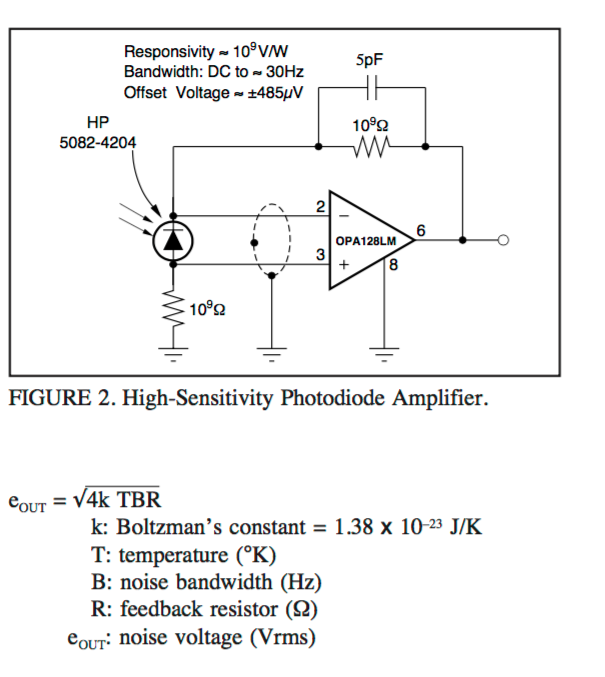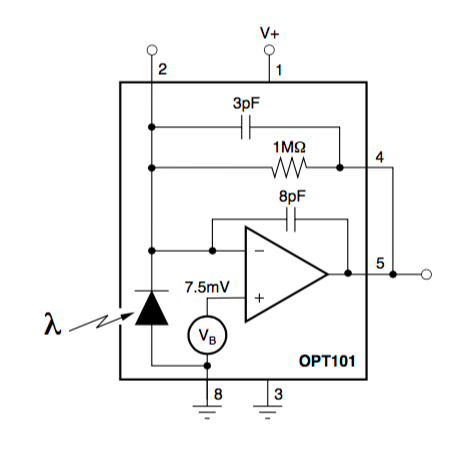Hello guys,
I've working on a simple circuit which is trying to measure the output of a regular photodiode ( OSRAM BPW34-FA PHOTODIODE, IR FILTERED).
And the circuit I'm using is shown above from www.ti.com/.../sboa061.pdf
I don't really know what the dot circle mean so I ignore it.
Could anyone explain to me about this circuit? Because as I know, the -IN and +IN of the amplifier should have the same voltage. But from what I measured, they are different. Although the output doesn't change according to the light intensity, I don't understand how this circuit works.
And further more, while I was trying to understand the circuit, I compare this circuit to an inner circuit of another amplified photodiode (OPT101). www.farnell.com/.../682873.pdf
These two circuit are pretty similar, besides the voltage across the photodiode on the one above is fixed by around 7.5mV and the output of the inner photodiode is amplified by the current produced multiplying the resistor.
Could anyone tell me the difference between these two circuit ? Thank you.



